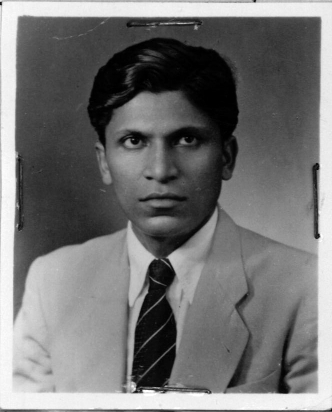
A portrait of Kadam as a student in the 1950s
After the Ambedkar exhibition, which bought together Ambedkar’s student file and the bits and pieces about him in our archives, I wanted to have one last try at seeing if there was anything else about him that I had missed. There didn’t seem to be much information on whether he had a continued relationship with LSE after his studies. Bearing in mind that archive catalogues often reproduce original terms found in archival documents, I searched our catalogue for the word “untouchable” and found the following file.
Correspondence between Lionel Robbins, Vithal Kadam and Jeremy Riasman (Lloyds Bank) re attempts by Robbins to assist Kadam ( an ex-student of Robbins and an 'untouchable') in gaining new employment in Calcutta, Mar - Apr 1957
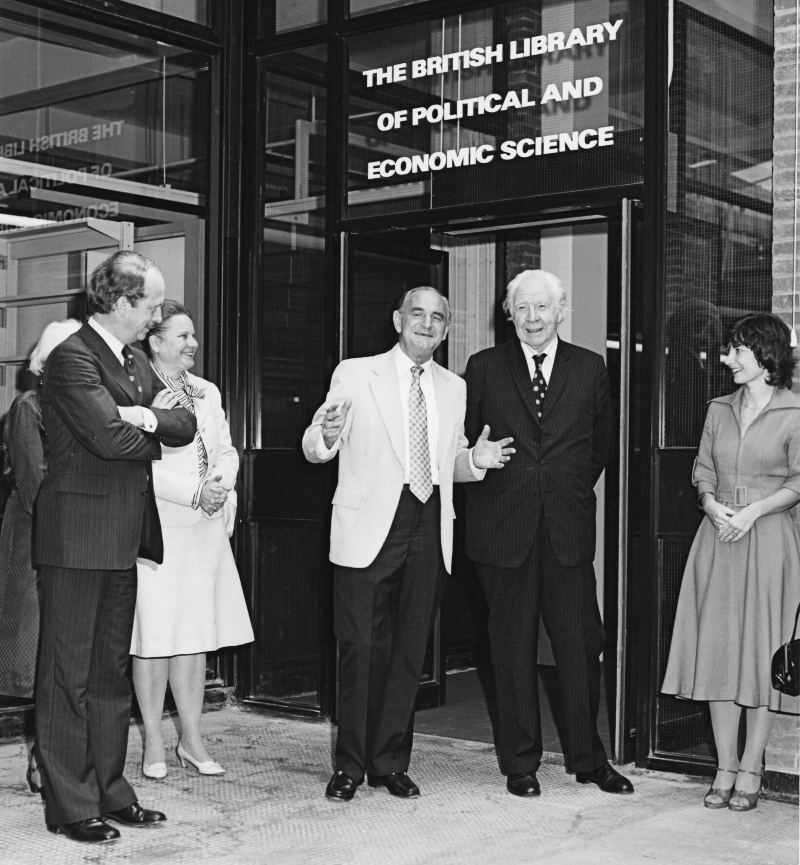
Lionel Robbins pictured second from right, in front of the building which takes his name (1978)
This file was within the papers of Lionel Robbins; an economist and director of LSE whose doctoral supervisor was the same as Ambedkar’s, Edward Cannan. I headed down to the archives store to take a look at this correspondence and found an intriguing letter from LSE graduate Vithal Kadam. Kadam had found work as a Professor of Banking and Head of the Department of Business Economics at the Siddharth College of Ecommerce and Economics, a post which was arranged by Ambedkar. Kadam is overworked and finds the conditions at the College untenable. Kadam writes:
After about a years’ experience I had decided to talk over matters with Dr Ambedkar, and was awaiting his visit to Bombay from Delhi (where he had settled for some years past). Unfortunately, Dr. Ambedkar did not live to make his planned journey to Bombay: he expired in Delhi on December 6.
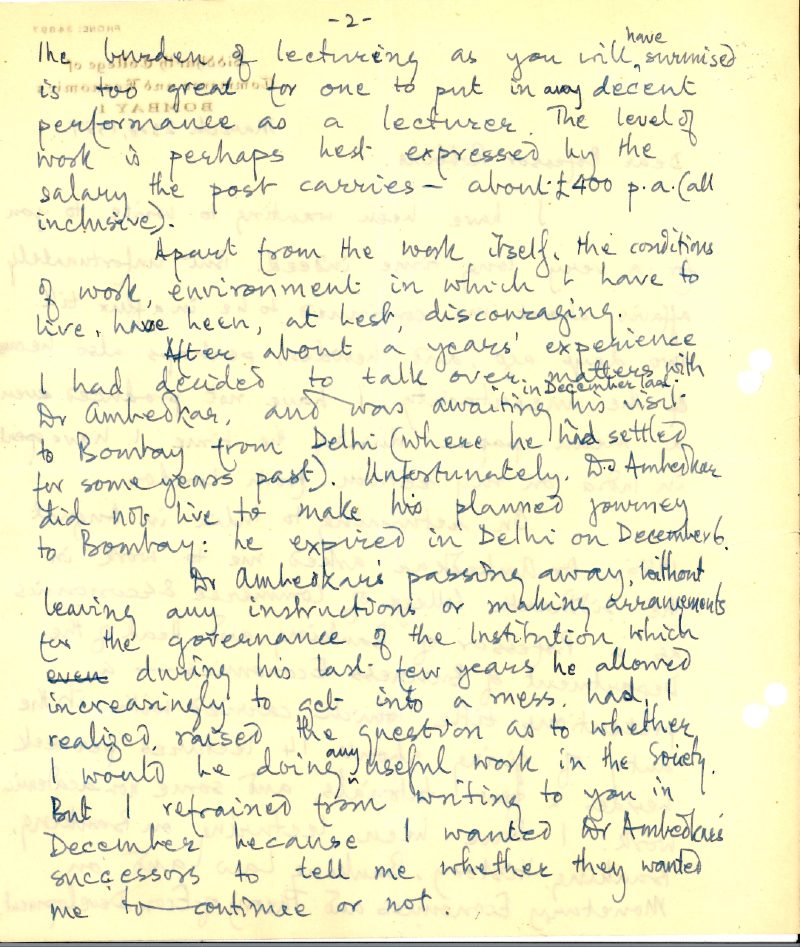
Kadam asks Robbins to help him find a job, as the situation at the College has become so difficult that the new Chairman, who replaced Ambedkar, has asked him to leave. Kadam writes a second letter to Robbins after not hearing from him.
…I have been feeling very low – and anxious to get some other employment. Some of the sorrow and anxiety are perhaps all too evident in my letter of the 23rd: I felt I didn’t phrase it carefully.
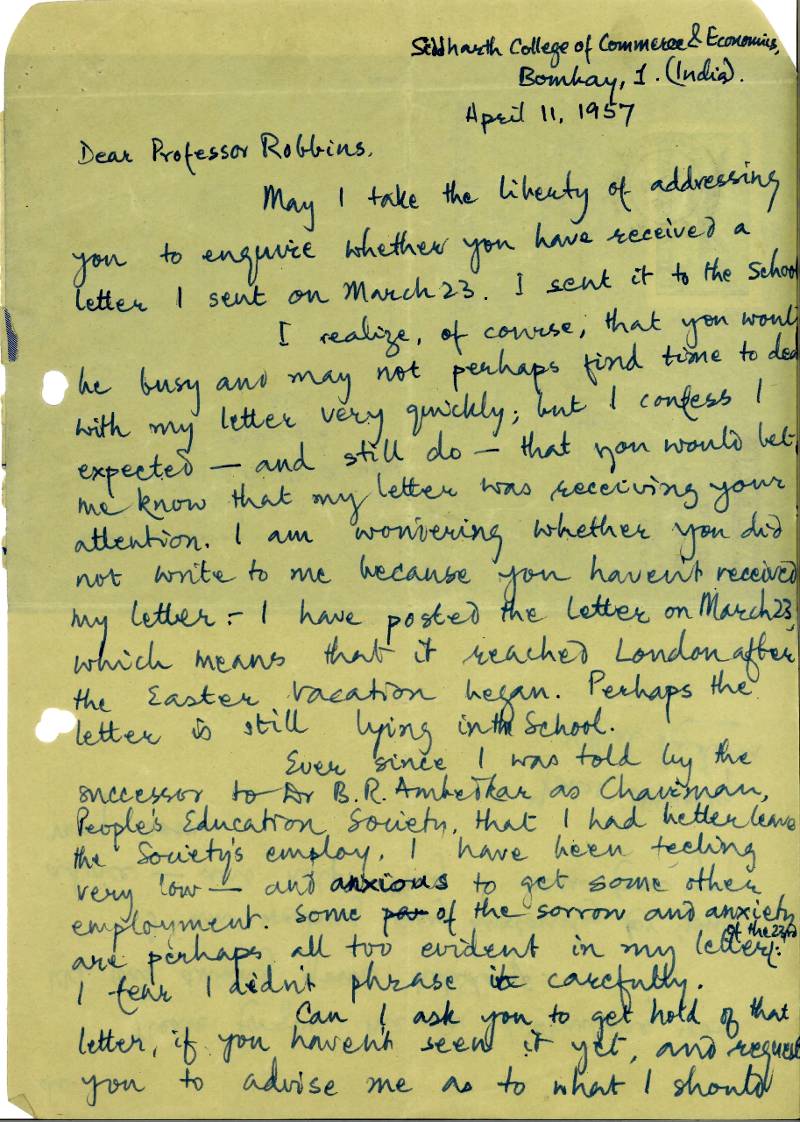
Robbins replies that he had been on holiday in Italy but had already written to a friend for advice on helping him. That friend was Sir Jeremy Raisman, of Lloyds Bank Ltd.
Do you remember that some time ago I spoke to you about the prospects of a student of mine, an Untouchable, about whose future I was rather anxious?
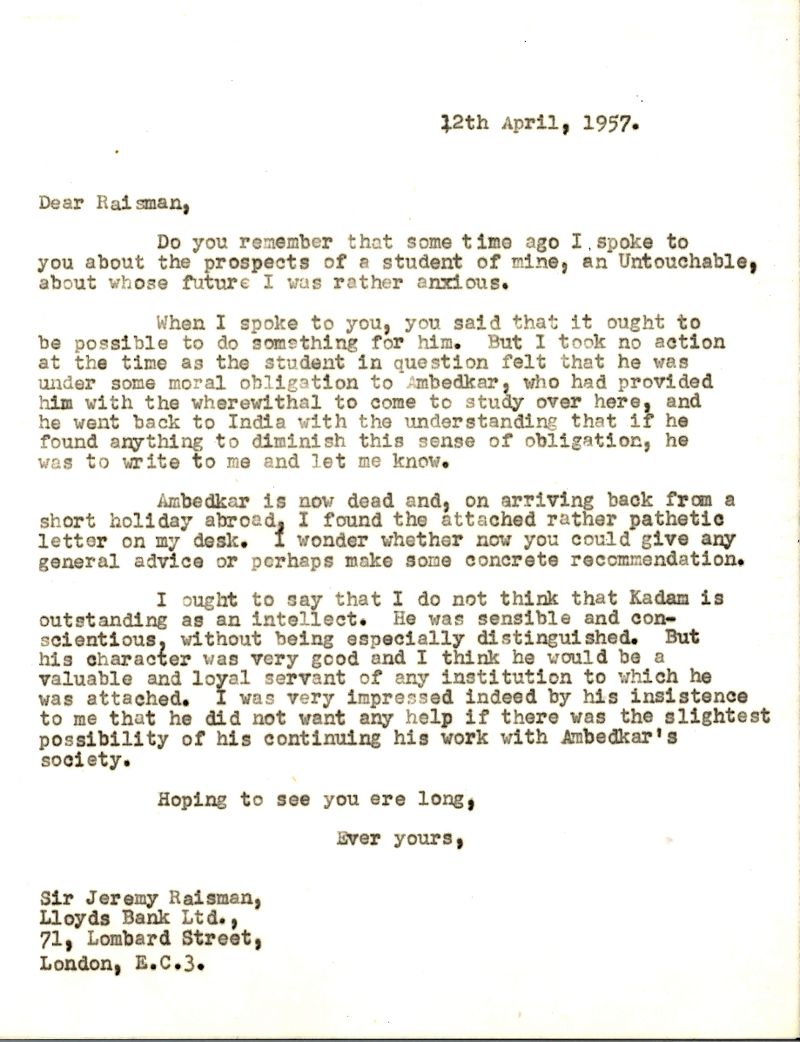
Raisman however, seems unable to assist, due to the way his company recruits graduates.
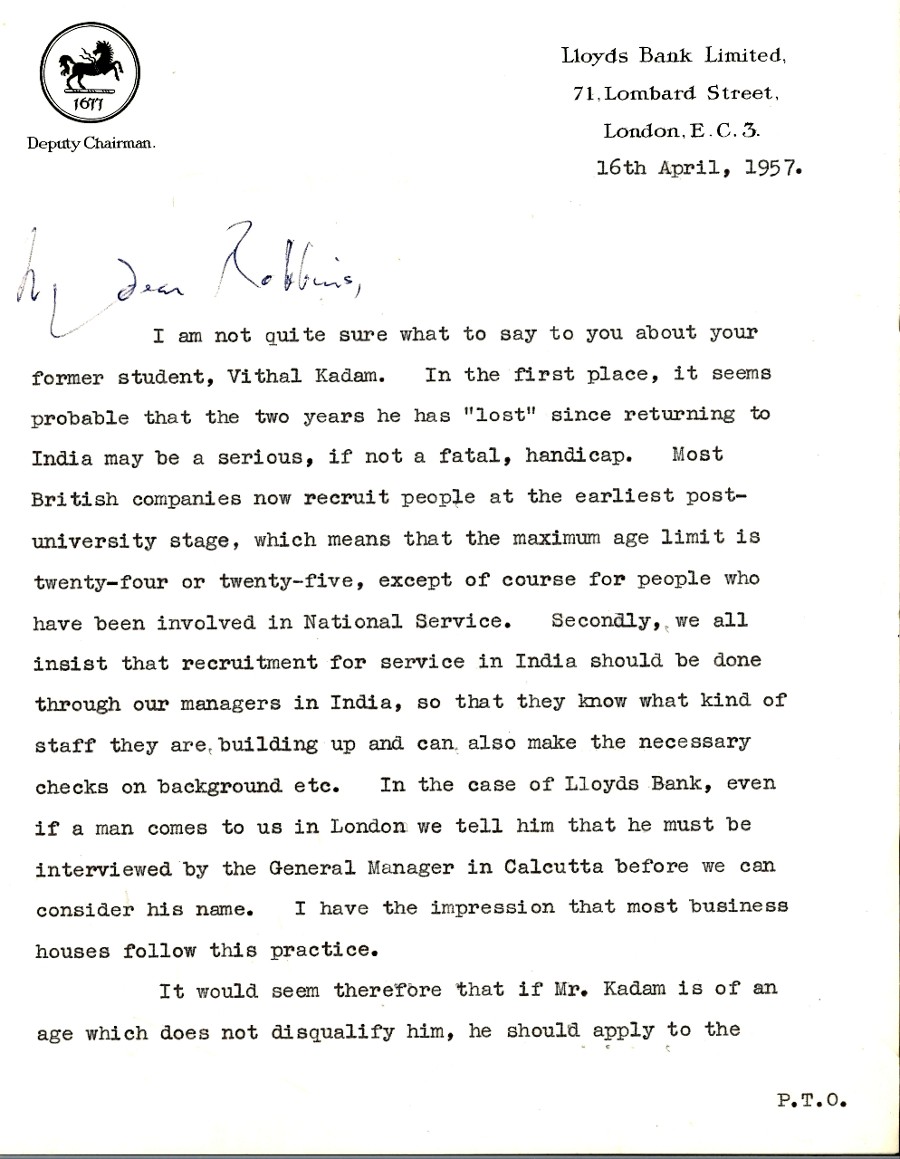
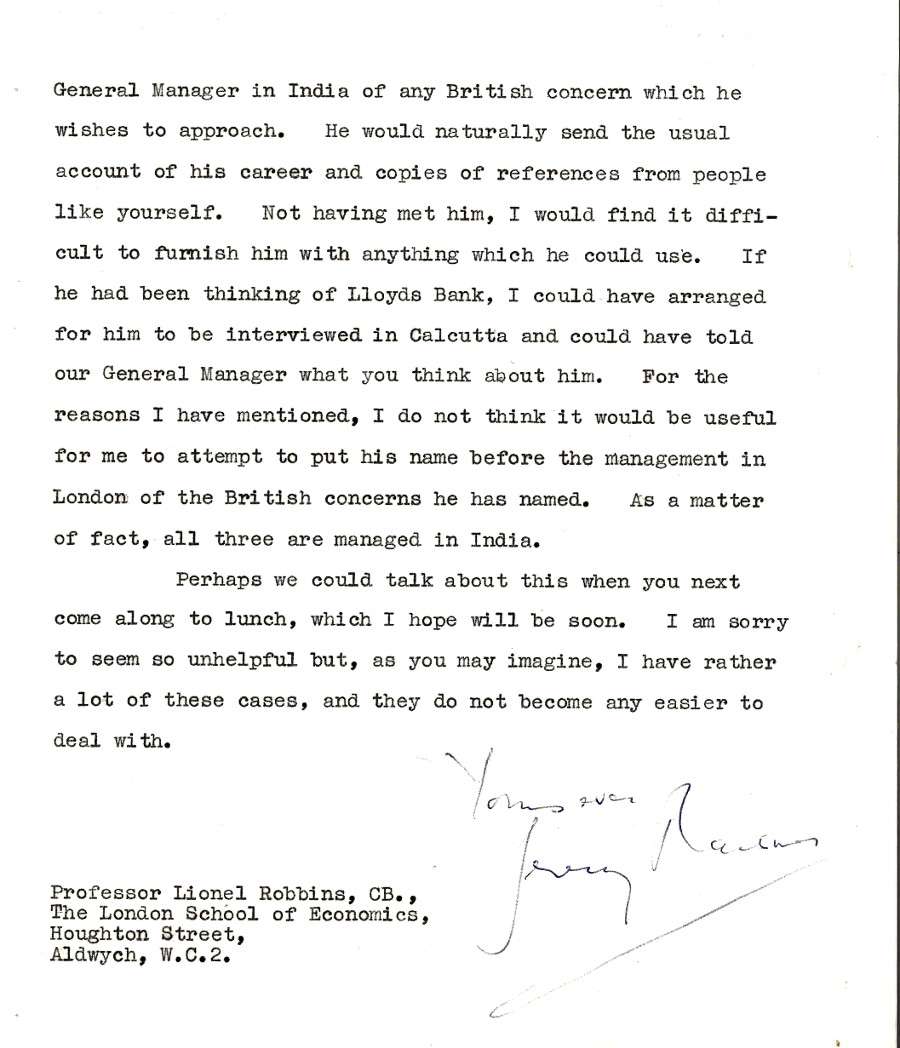
Finally, Robbins relays this information back to Ambedkar, offering to make an exception and include an “open testimonial” or reference.
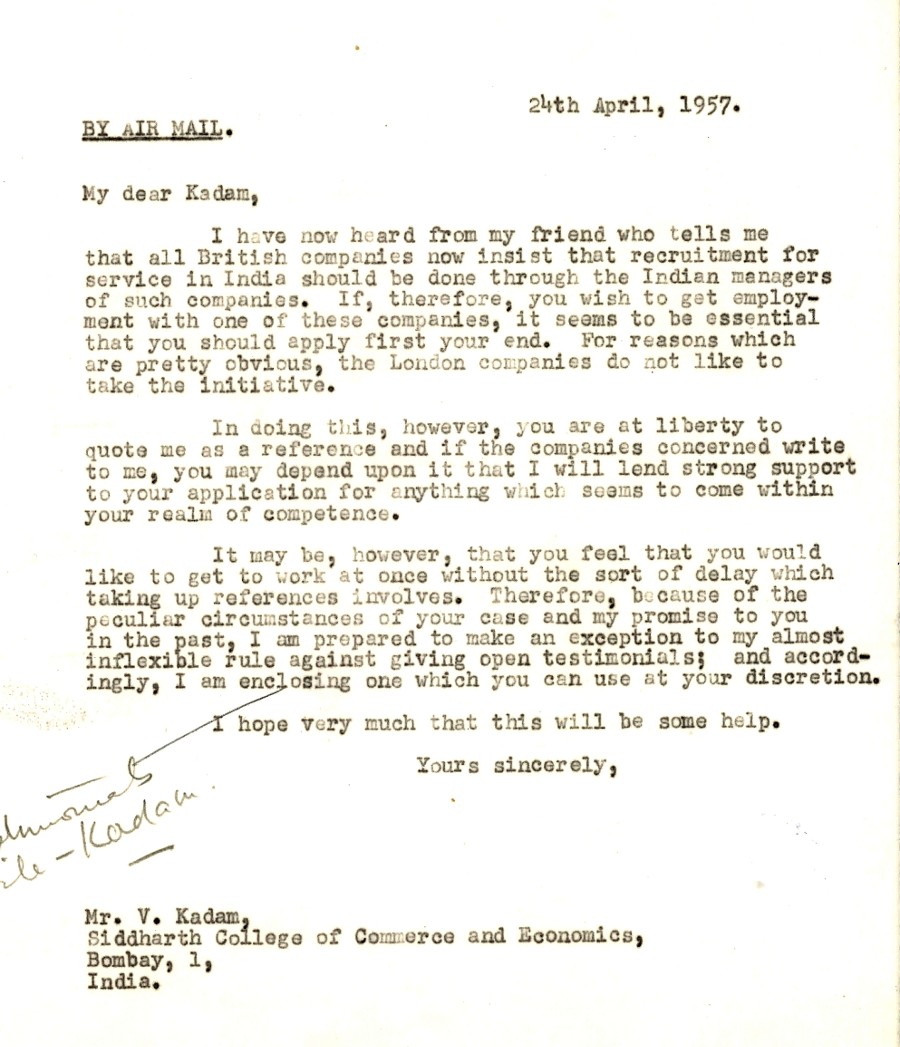
Reading these letters, I found myself very much on Kadam’s “side”. He admits to feeling anxious and troubled and clearly seems to be in a difficult situation. I was also feeling unresolved about Robbins approach– who on the one hand seems to go to great lengths to help by contacting Lloyds Bank and providing an open testimonial, and on the other hand describes Kadam’s letter as “pathetic”.
As is often the case with archives, one jumps straight into the middle of a story, and cannot always found out how it ends. What happened next to Kadam? There was no further trace of Kadam in our archives. I searched for his name everywhere and couldn’t find out what happened to him.
Luckily, Kadam had left a clue in the postscript to one of his letters to Robbins. He reminds Robbins that he graduated from the LSE in the mid-1950s. Armed with that information, I knew that he was likely born some time in the 1920s and studied here in the 1950s. This was just enough information to search our database of student records.
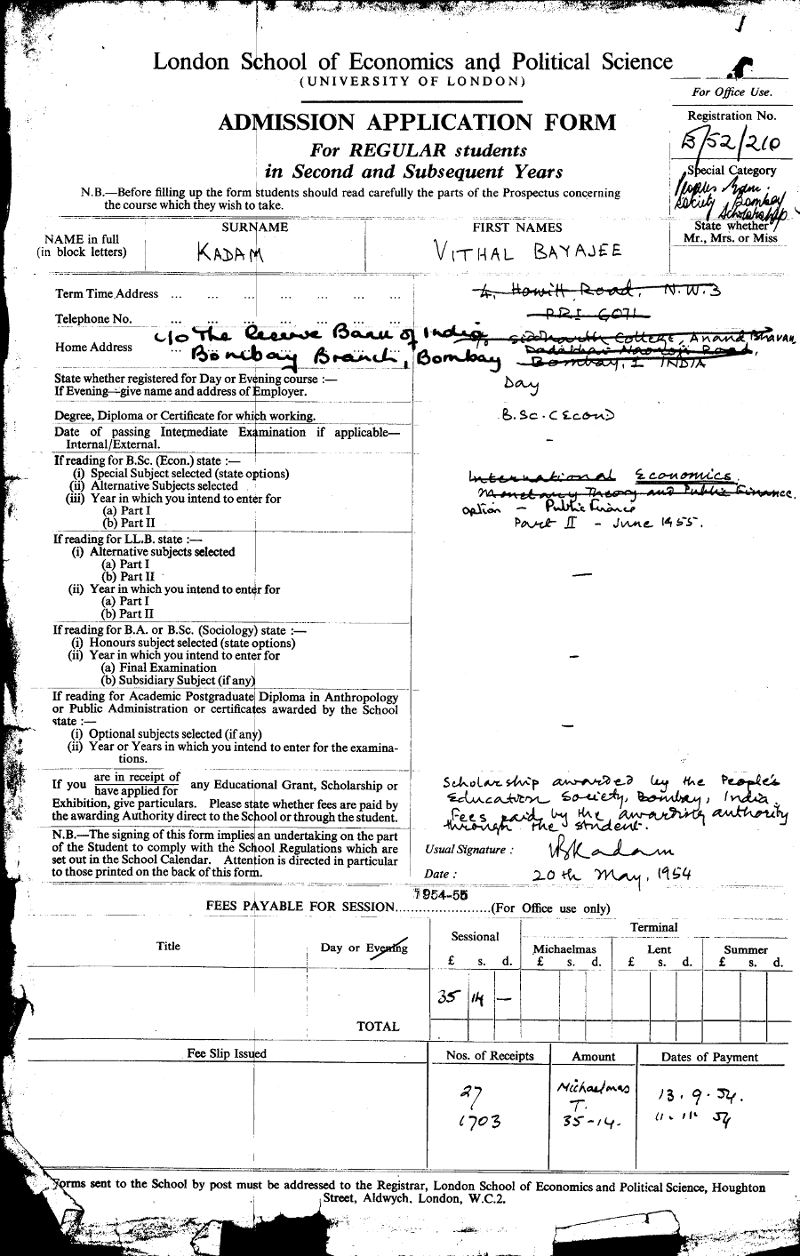
Kadam's application form to LSE
In a secure underground store somewhere in the UK, the LSE keeps records of its former students, along with other parts of the Library’s collections. These student files contain administrative documents that relate to a person’s study at the School e.g. their application form and their attendance reports. Our database listed a “Vithal KADAM” as having studied here in the 1950s, so I immediately ordered a copy of it. A few weeks’ later, I had 46 pages of administrative records relating to the Kadam I was investigating.
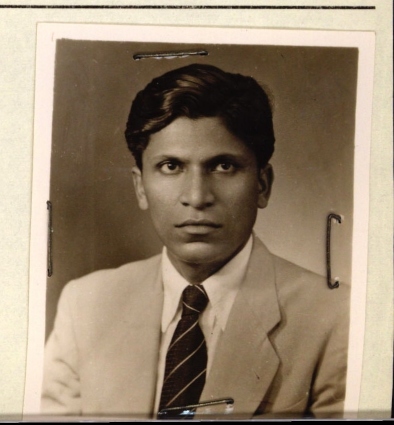
The portrait photograph Kadam enclosed with his application
The student files contains lots of interesting information about Kadam’s time at LSE. We find some reports from his tutors (one of whom was Dr. Vera Anstey) and discover the difficulties he had in finding accommodation at the start of his studies (“He is rather unsettled finding lodgings”).
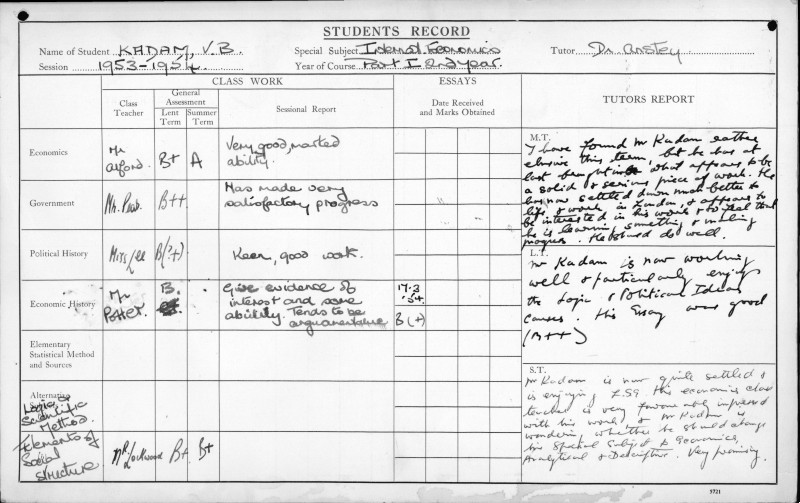
We also find his application form, where we learn that he was studying at LSE under a scholarship from the Peoples’ Education Society, a CV (where we learn he was born on 26 June 1926 in “Karjat District Ahmednagar”), his middle name (“Bayajee”), the fact that Dr. Anstey intervenes to urge that his application is accepted, and letters to NatWest asking to set up a bank account
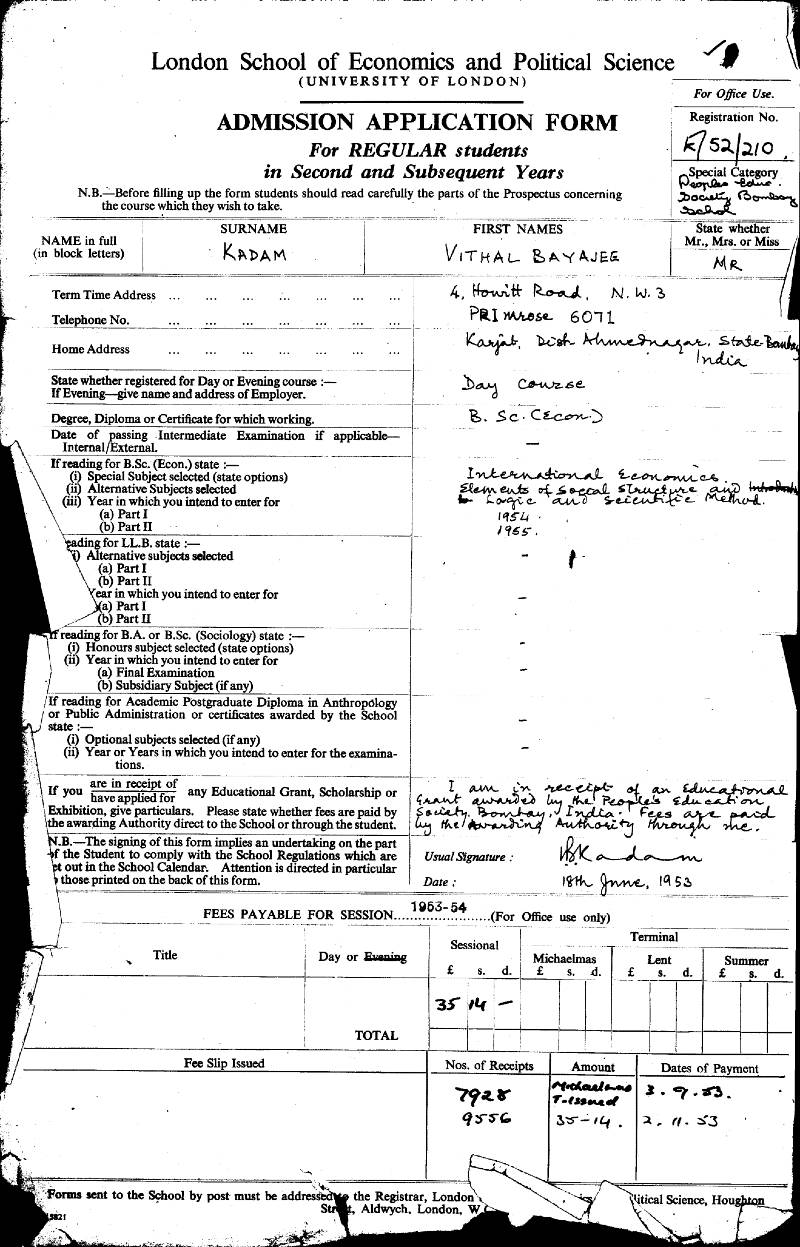
To my surprise, amongst these administrative documents I also found original letters written by Ambedkar, which I don’t believe have been seen before. Ambedkar writes as Chairman of the Peoples’ Education Society to the Chancellor of the Exchequer Rab Butler (who had been born in British India and whose father was a member of the Indian Civil Service).
I need your help; that is why I am troubling you with this letter. Some five years ago, I started a Society called the Peoples’ Education Society for spreading higher education among the Untouchables and the Backward Classes….The Society has gone a step further and has undertaken the responsibility to finance the education of boys from the Untouchable Classes in foreign countries as and when its finances permit.
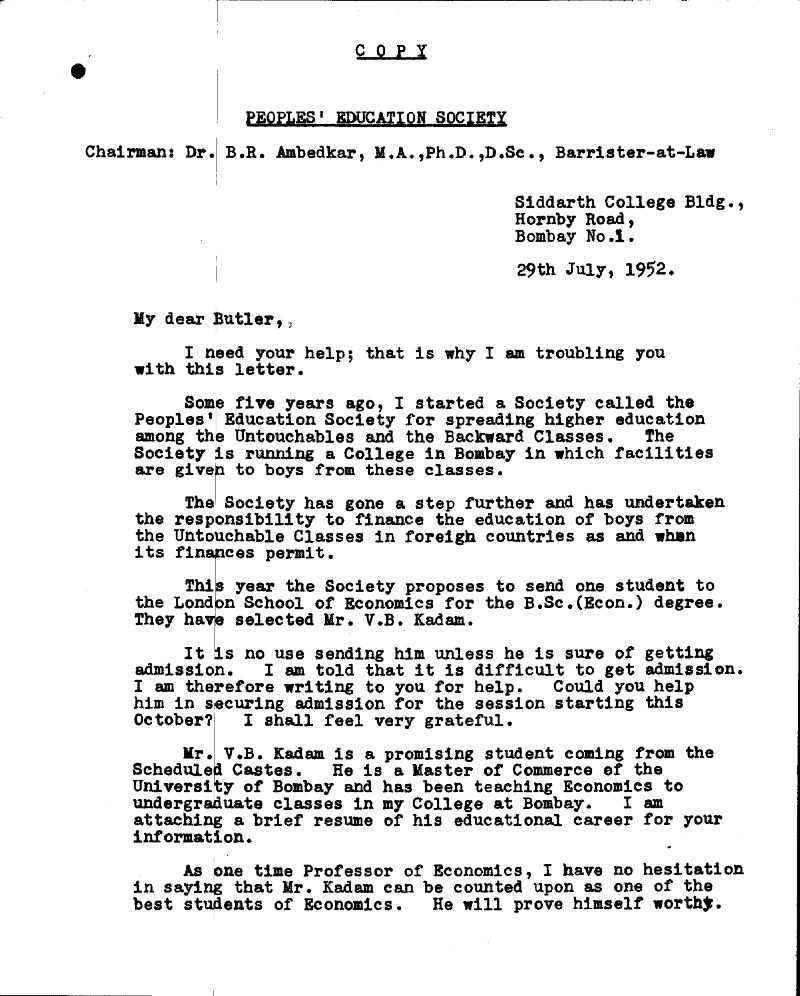
Ambedkar therefore arranged for Kadam to come to LSE on a scholarship paid for by the Peoples’ Education Society, which Ambedkar was the chair of. Ambedkar describes Kadam as “one of the best students of economics” and also writes to Vera Anstey to help secure his position at the school. Anstey had earlier worked at the Sydenham College of Commerce and Economics where she examined students at the College (her husband was the College’s Principal) and so would have known Ambedkar (LSE South Asia Centre hosts an essay competition in her name).
I hope you remember me. I was a Professor at the Sydenham College of Commerce and Economics when your husband was Principal.. …I am told that it is difficult to get admission ([to the LSE] Could you help him in getting admission for the session starting this October?
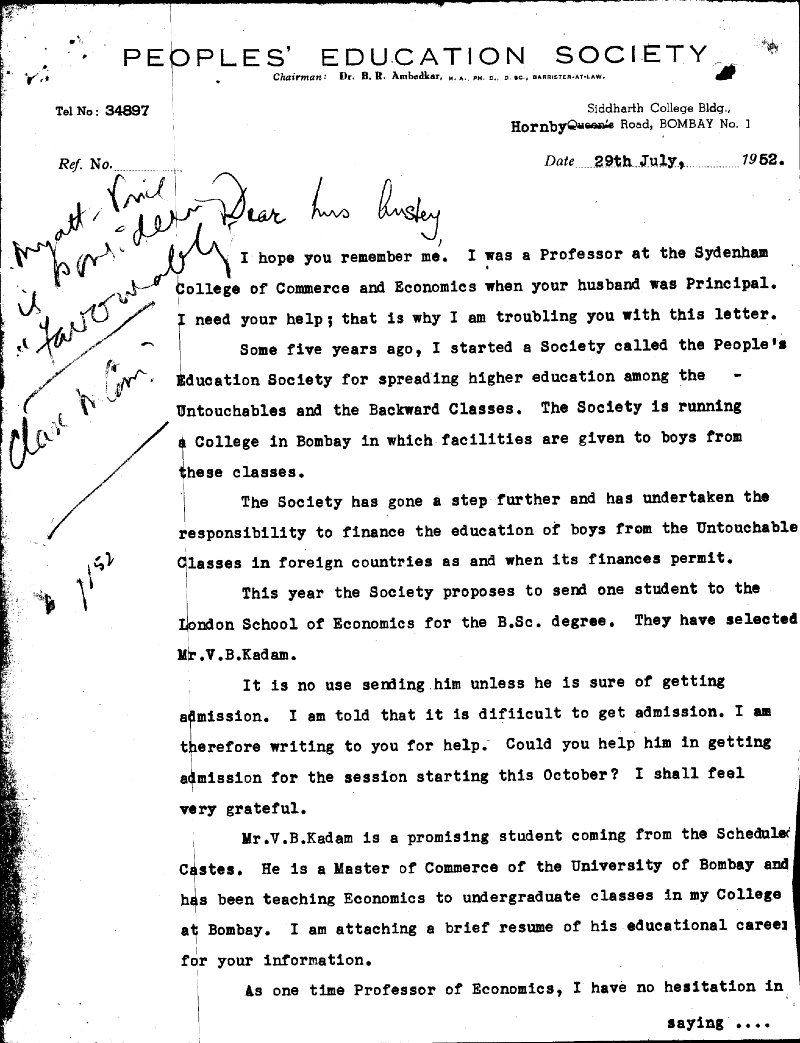
These letters provide evidence for Ambedkar’s instrumental role in arranging scholarships for Dalit students such as Kadam and using his former contacts to secure admission at LSE.
Whilst this fleshed out for me a lot more information about Kadam’s time at LSE, I still didn’t know what happened to him after LSE, other than his anxious letters to Robbins. I searched Twitter for his name alongside Ambedkar’s, and found the following:
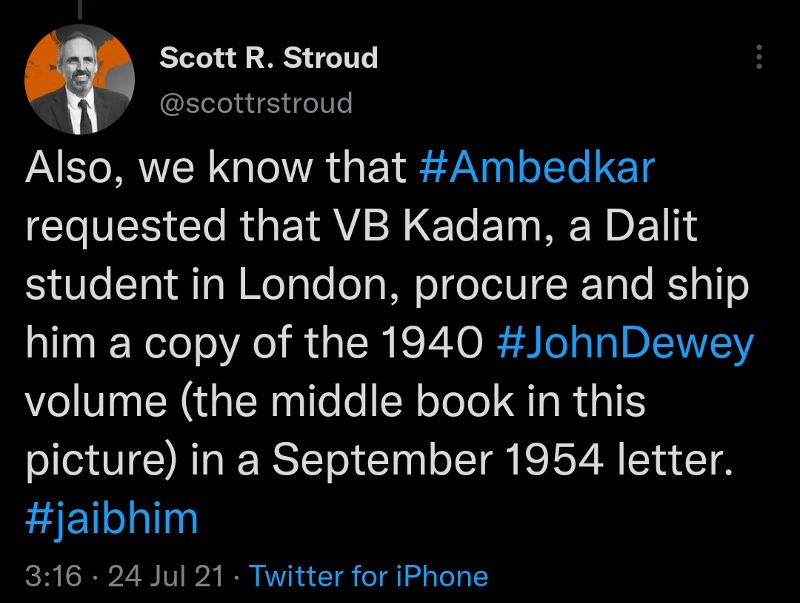 Original Tweet
Original Tweet
I contacted the author of the Tweet Dr. Scott R Stroud, who confirmed this was the same Kadam that I was looking into. Dr. Stroud very kindly shared the backstory to his tweet, which appears in his interesting open access journal article and explained that Ambedkar would press Kadam into sending him lists of books from London. As the article notes these letters are in various places, including B. R. Ambedkar Papers, Microfilm Roll No. 1, Nehru Memorial Museum and Library, New Delhi.
I was surprised I could still find no reference to what happened next to Kadam. Did he find another job? I contacted the LSE alumni office, wondering if they had any interactions with him.They had one record that he worked at the RBI (Reserve Bank of India), but there were no further details and that this might not have been updated for a very long time.
I wasn’t sure if an email to a generic address at RBI would be noticed, so I instead got in touch with the Museum of the Reserve Bank of India (which aims to document and preserve the Bank’s heritage). The wonderful curators there put me in touch with Dr Narendra Jadhav who they believed may have known Vithal Kadam.
An Ambedkar scholar and economist who has served as Member of Parliament-Rajya Sabha, Dr. Jadhav had become Chief Economist of the RBI in the same rank as Kadam, its Executive Director, from where he took a voluntary retirement. Before becoming an MP Dr. Jadhav was Vice Chancellor of Pune University, and Member of the national planning commisison in the rank of a Deputy Minister. He is also a published author of over 40 books, in English, Hindi and Marathi. He was kind to arrange a Zoom call with me where we chatted about his memories of his former boss, Mr. Kadam:
I remember Shri Vithal Kadam as an exceptionally intelligent person, quite abrasive (even arrogant) in his outwardly behavior, but extraordinarily kind at heart. He had unusually beautiful handwriting - which reflected clarity of his thinking. His ability to draft the Queen’s English was truly phenomenal. Many senior colleagues knew that during the years 1977 through 1980, when Dr IG Patel was the Governor of RBI, who himself had an extraordinary command over English language, used to secretly share his drafts with Shri Kadam for vetting. I can’t think of a greater compliment that could have been paid to Shri Kadam.
Quote from Dr. Narendra Jadhav, talking to Daniel Payne (email), 2022
Dr. Jadhav also found a picture of his own wedding day, with Kadam situated on the far left.
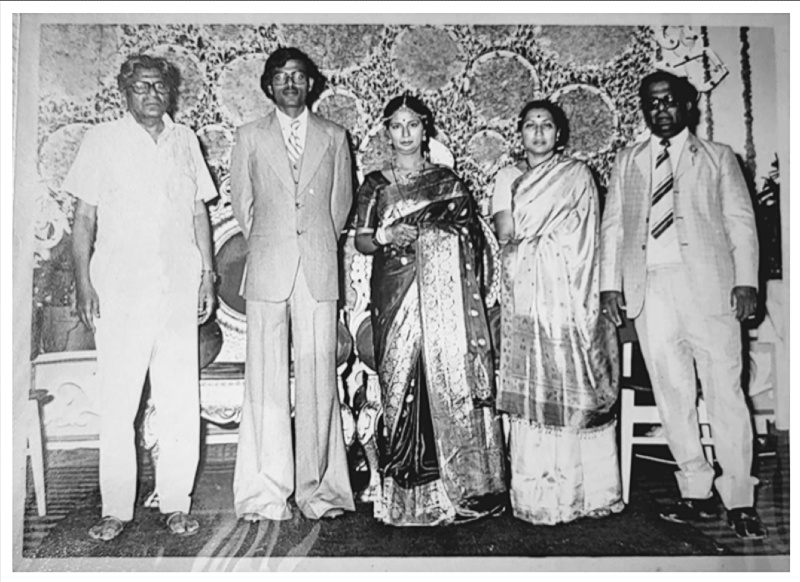
…the year was 1979 and the occasion was my wedding. Shri Kadam did not bring his wife along because, inadvertently, I had forgotten to mention her name in the invite. I was publically admonished for that omission, right at the wedding
Source: Quote from Zoom call and subsequent email from Dr. Narendra Jadhav to Daniel Payne, 2022
Dr. Jadhav thanked us for the opportunity “to pay tribute to one of my heroes”, and I am thankful to him for giving up his time to share his memories of Kadam with me. Dr Jadhav also put me in touch with Kadam’s son, and I hope to add to this page more memories to help share more about the life of this “promising student”.